Brunner is a large-scale - a perennial, unpretentious plant, distinguished by high winter hardiness and teotalemability. Quickly smashed under the crowns of trees or in the shadow of shrubs, bushes Brunners all season, to frosts, remain decorative and attractive. The most spectacular is the foliage of perennial: silver, with green veins or green, with light splashes and bright border, depending on the variety.
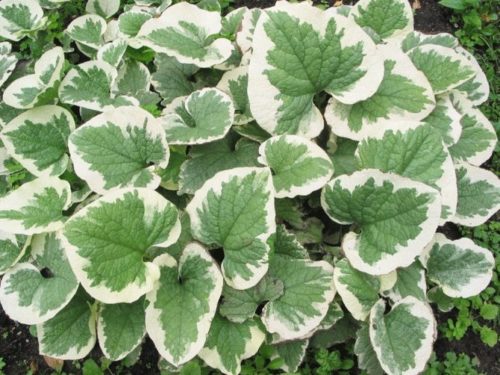
The plant is so hardly and vitality that almost does not need care. There are only some rules for agricultural culture growing associated with its morphological features and preferences. All tips for planting, breeding and care for Brunner large-scale - in this selection of material.
Brunner largest, description of the plant
Brunner is large or, as it is also called, uncomfortable, - unpretentious perennial of the boured family. Comparing it with forget-me-not, mean similarly gently blue blossoms, differing only in the color core of flowers.

The plant was named after Botany and Traveler from Switzerland Samuel Bruunner. The second part of the title was received due to the large and beautiful lower leaves of the culture.
The perennial is unpretentious in caring, winter-resistant, moisthed and very attractive. In one place, the culture can grow up to 15 years.
Beautiful, spreading bushes quickly grow up and easily multiply.
Brunner large-scale - the owner of decorative leaves, heart-shaped and lanceal form reaching up to 20 cm in width. Burnt leaves are significantly larger than those located on top, and, to the top of the foliage, everything is becoming smaller. Packers in large leaves - long, small - short or completely absent. The sheet plate is slightly pubescent, dark green on top, below - brighter.

- Neckless rhizome - short, thickened, horizontal. Pressure roots are thin, filamentous.
- Stem in Brunner straight and single, reaching up to 60 cm. On the entire length, shoots are covered with short hairs.
- Flowerines are developing from the sinuses of the top leaves. Small flowers are collected in inflorescences - loose bulletin or shield. Hangs - blue or blue shades, with white core. Blossom starts in April-May and lasts about a month. Sometimes Bruunner blooms the second time in the fall.
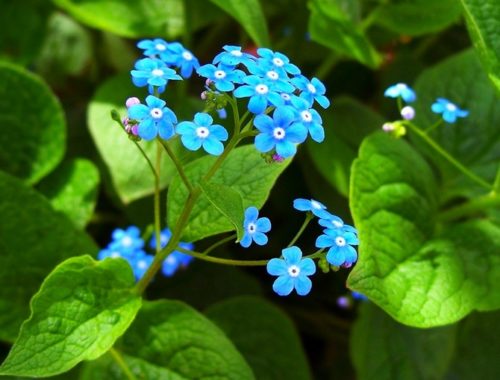
- The fruit of Brunner is very small (up to 3 mm), is represented by a nut.
- The natural range of the plant is the Caucasus region. Most often, Brunner grows on the territory of shady forests or meadows, along rivers or lakes. Most countries are cultivated as a decorative plant.
Brunner Large, varieties
Bruunner includes only three types: large, Siberian and East. The view of Bruunner largest is considered the most attractive for gardening gardening. Breeders most often use this species to remove new varieties. Interronsal differences, as a rule, are reduced to different form and color of the leaves. Consider the most popular Bruunner varieties in largest.
Brunner Large Jack Frost
Translated the word "Frost" denotes "Frost". And indeed, the grade is distinguished by light, silvery leaves (as if covered with incomplete) with bright green veins and border on the edge of the sheet plate. Bushes are large and spread, up to 60 cm in height. The grade has elevated frost resistance and moisture.
Brunner Large Silver Wings
The variety is characterized by large decorative leaves, densely seated silver spots. The bushes are neat, compact, do not grow. The height of the bush does not exceed 40 cm. The variety prefers shaded and moisturized places of growth.
Brunner Large Hadparn Crim
The grade is characterized by the presence of a wide, heart-shaped, leaves, up to 15 cm long. Sheet plate is painted in green, with a thin bright border around the edge.
Brunner Large Kings Rans
It has large light gray leaves, with bright dark green streaks. The bush grows up to 40-50 cm in height, is distinguished by abundant blossom. Culture grows well in a half, in well-humidated soil.
Brunner largest Langitz
For a variety "Langitz" is characterized by a dark green color of the leaves, with silvery specks.
-
Brunner Large Variagrata
A low variety that reaches no more than 35 cm with green leaves and a pronounced broad light cream border. The plant does not like a bright sun, where the foliage loses its attractiveness and whites. The drought can provoke the focus of plant foliage.
-
Brunner Large Millennium Zilber
Emerald leaves of this variety Brunners are covered with white spots. Growing conditions are similar to other varieties.
-
Brunner Large Luking Glass
The variety is distinguished by light, silver leaves with green streaks. Small flowers - gently blue shades. The bush is low (up to 35 cm), compact, well holds the shape. Ideal for clearance of borders and rocaries.
-
Brunner Large Silver Hut
The name of the variety is translated as "Silver Heart" and fully displays the appearance of the leaf of Brunner. The silver shade of the entire sheet plate, with a narrow green border, give the bushes an unusually decorative look. The height of the plant does not exceed 40 cm, and the diameter of the bush is about 50 cm.
Bruunner largest, planting features
Brunner largest - a perennial grassy plant, perfectly adapted for planting and growing in the open ground.
Place for landing Bruunners Large
Considering the morphological features of culture, it is important to pick up for its landing an optimally favorable place.
- A place for planting perennials is chosen in a half (for example, near the trees or the northern part of the house). Strong shadow, exactly, like direct sunlight, negatively affect the development of Brunners, significantly reducing its decorative qualities. In the shade, shoots are beginning to thread and stretch, and on the sun - the leaves are pale and fall.
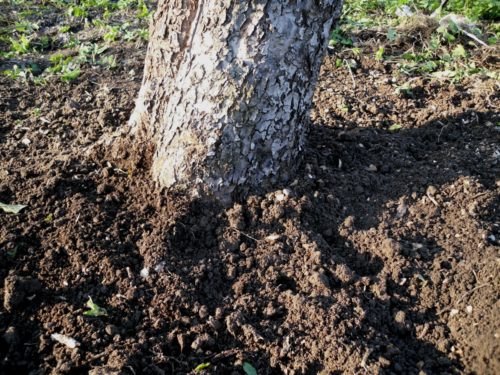
- Brunner is a moisture-loving plant. This should be considered when planting a plant. Nizans, partially shaded terrain near water bodies flowing from the roof water - the most optimal options.
- Soil for unpretentious brunner is suitable for clay, dense, wet, without excess fertilizer. Too rich and nutritious soils, no matter how paradoxically, violate the natural biorhythm of the plant.
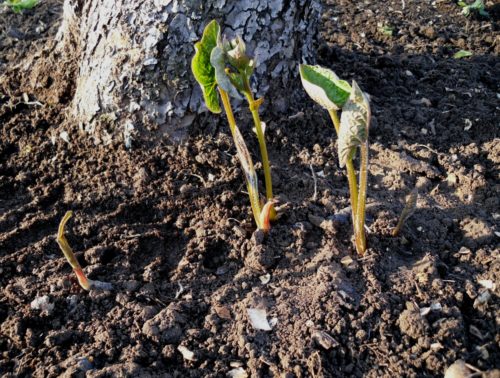
Agrotechnology landing Bruunners large-scale
- Landing Bruunners coincides as a rule with the process of its separation. After the bush completely plowed, cut off the entire above-ground part (leaving 10 cm shoots). Then the plant digs and cleaned and washing the roots from the ground, the bush is divided into several parts. The main condition is the presence of a part of the root of the renewal of the next year in each deduction. To fit the part of the bush, wells are prepared in advance, the young plant of the soil is tightly sprinkled and pour it off with water. The root neck of the plant with proper landing should be at the level of the ground surface.
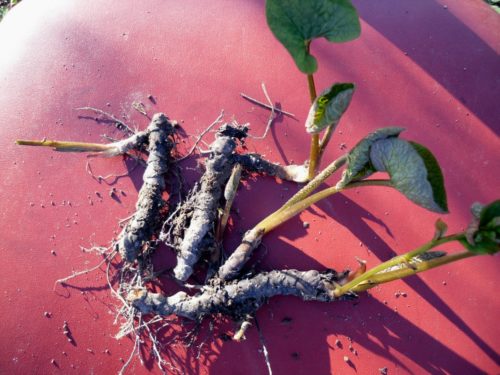
- Brunner Larner is also successfully multiplied by part of the root. The rhizome of the perennial has a horizontal surface location, so it is easy to dig it. Rhizome is separated by several parts (about 5-6 cm long) with the kidney of the resumption of the future sprout. Such areas of rhizomes are laid in shallow (up to 3 cm) wells, compact the soil and watered. The landing site is better to climb sawdust or bark, which will keep the wet microclimate for a long time.

- Peresoid a perennial can be in spring or summer (after flowering), in cloudy weather either in the evening. For successful transplantation, it is necessary to preserve the plants near the roots as much as possible. According to the gardeners, the most successful period for transplantation is the end of summer.
- Considering that Brunner grow quickly, when landing should be kept the distance between plants from 30 to 50 cm.
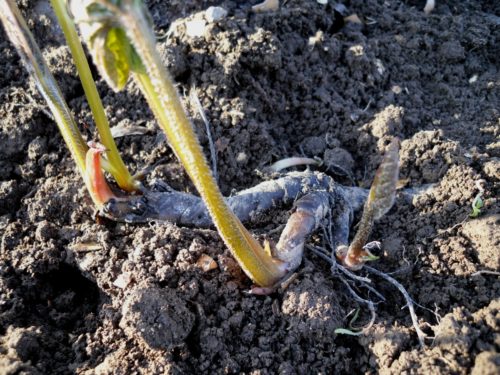
Bruunner Large, plant care
Like landing and caring for Brunner suggest a minimum effort. But the spectacular appearance of the plant will be able to please others from spring and to the most frosts. The fact is that after flowering the culture does not lose the leaves, thereby maintaining its attractiveness throughout the season. Faded flowers and inflorescences can be removed so as not to spoil the beauty of decorative foliage.
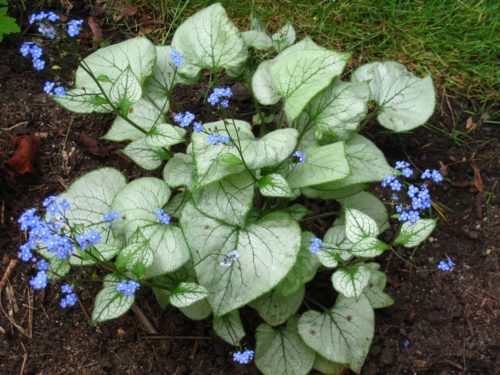
The perennial care is easy and comes down to elementary events: weeding, watering, anticipate pests. Consider some features of cultivation of this herbaceous plant.
- Weeding must be carried out carefully, not deep, taking into account the surface root of the roots of Brunner. It will be better to manually snatch weeds, and then the plot is closed. This will help to avoid the growth of weed grass and injury to the root of Brunner.
- Watering, in the absence of natural precipitation, must be regular and abundant. Mulch will help longer save moisture around the plant. If the soil is wet, it is not necessary to water the plant additionally. Permanent moisture stagnation can lead to the reinforcement of the roots of the plant.
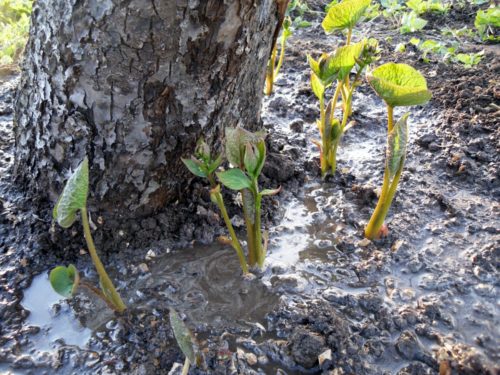
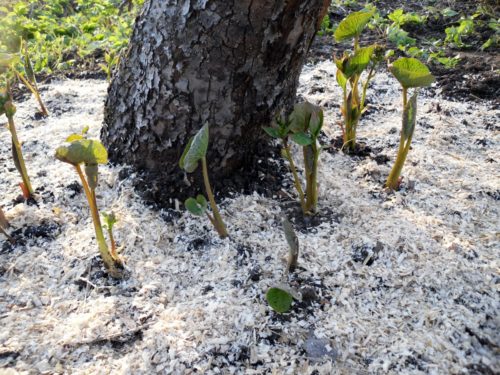
- To rejuvenate adult bushes, when the middle of the bush is noticeably rarely, they are periodically divided and transplant to a new place.
- Of the fungal diseases affecting the perennial, the "drone spot" should be feared when characteristic stains appear on the foliage. Puffy dew can also affect the leaves and shoot Brunner. Most often, rainy raw weather provokes the development of these fungal diseases. In the fight against them will help the removal of damaged parts of the plant and the treatment of a fungicide (for example, a burgue mixture or phytosporin).
- From the pests, the danger to Brunner represents such insects as a white throat and a word. When attacking the pest plant, destroy the carbofos solution, accomplishing or tar soap.
- When preparing a plant for winter, the above-ground shoots are cut off (leaving 10-15 cm of hemp), and the soil is mulched by a peat that foliage or compost. In additional shelter, the perennial does not need.
- Planner Brunner grow very quickly, "scoring" the surrounding plants. Therefore, it should be periodically limited and controlling the growth of bushes, and when landing is enough to leave enough space for growth.
Bunner brewer brewing
- The most popular and simple types of vegetative reproduction of Brunner (part of the bush and rhizome) were considered in the section "Agrotechnik landing".
- There is another way of reproduction - seed. Unfortunately, to independently assemble the seed material is very difficult, since they often do not have time to donate due to the onset of frosts. Sometimes, with favorable weather conditions, a peremier of perennial occurs.
- Brunner seeds largest can be bought in specialized stores or nursery.
- The seed method of reproduction does not always retain the morphological signs of the Maternal Oracter.
- Another disadvantage is quite a long period of development from the seed of an adult bush, capable of blooming only for the 3-4th year of life.
- If the seeds are seeded in the fall, they are sowing them into the open ground, in the wells or grooves. In the spring sowing, seeds are pretty pretty (temper) for 3-4 months.

Application Bruunner Large in Landscape Design
- Decorative bushes Brunners fit perfectly into the design of borders, tracks or rocaries. At first, during the flowering period, the celestially blue cloud of inflorescences is delisting and pleased with the eye. But after flowering, unusually attractive foliage makes brunener bunner no less spectacular.
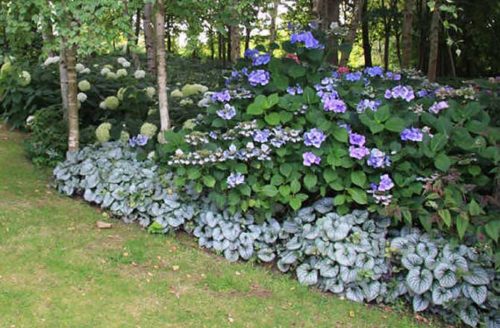
- At the flower beds, mixlers and alpine slides, the perennials are used as the lower tiers of plants. And considering the non-durability and endurance of perennial, it becomes one of the favorites while landscaping the site.
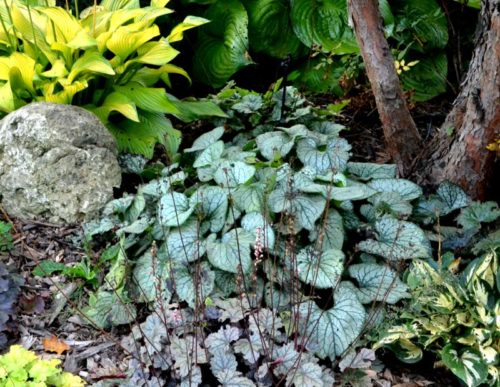
- An unusual coloring of the leaves beneficially shalles Bunneur large-scale against the background of other plants: ferns, juniper, cerema, etc. Silver painted leaves on the background of the usual, green mass look especially brightly.
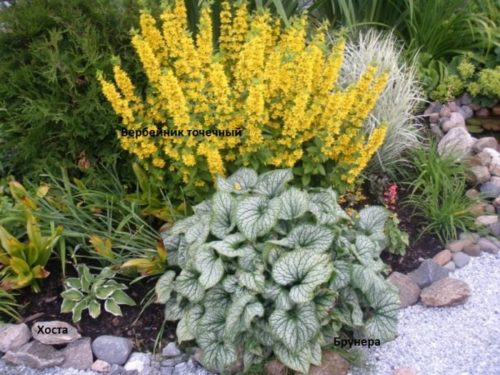
- Near Brunner's reservoirs feels most comfortable, decorating the shores and nearby landscapes. Brunners lined between stones bounners will look exotic.
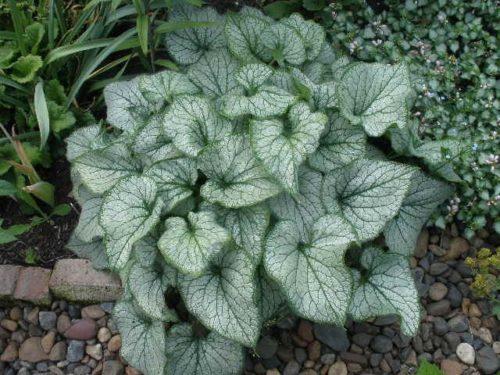
- When placing the landscape, it is important to use such properties of Brunners as shadowlessness, unpretentiousness and moisture. Lowned trees or shrubs Perennials will be able to grow perfectly and grow up, while many other (sun-born) plants in the shade slow down their height and may die.
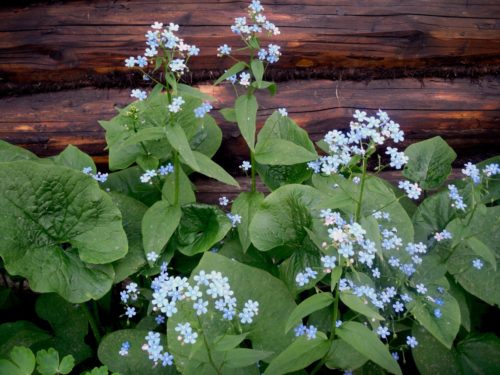
conclusions
- Brunner large-scale has high decorative qualities due to not so much of its flowers as unusual in shape and color foliage.
- A long-term grassy plant is unpretentious and life, quickly grow up and easily breeds.
- Landing and leaving Bruunner large-scale does not require special knowledge or skills. This plant is ideal for growing gardeners - newcomers.



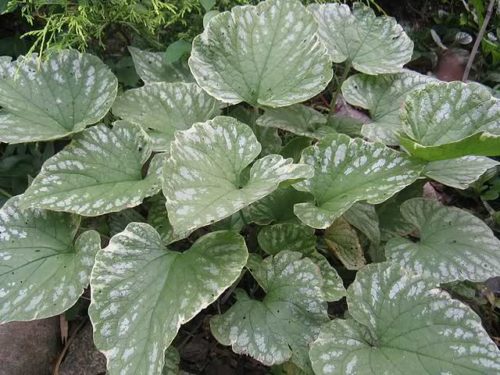
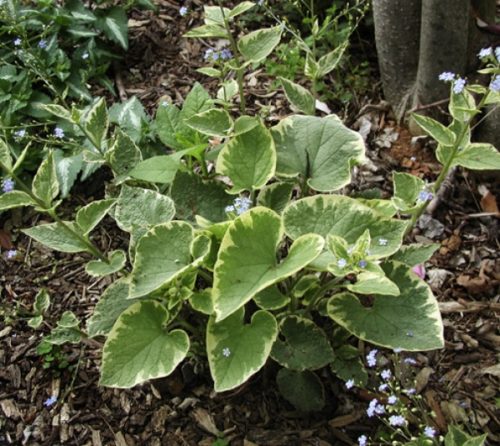
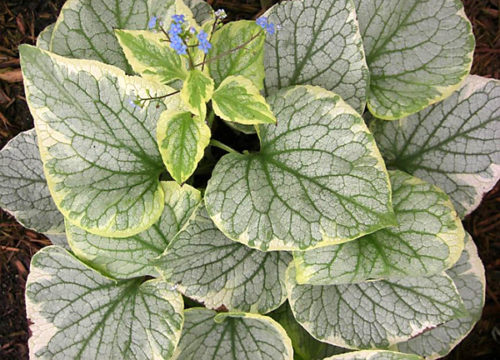
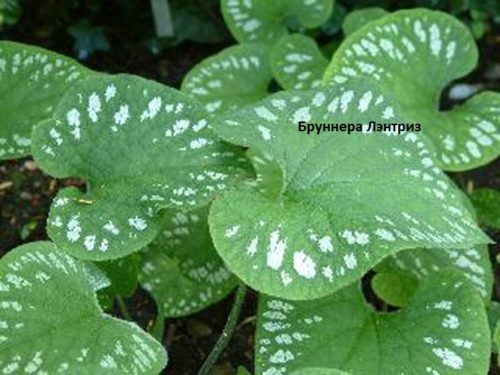
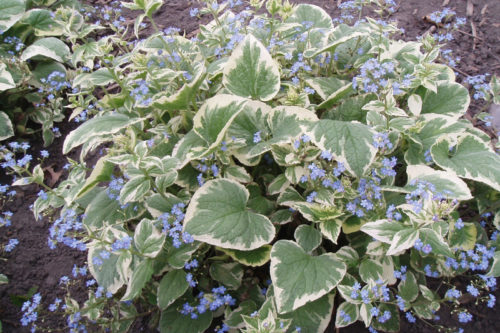
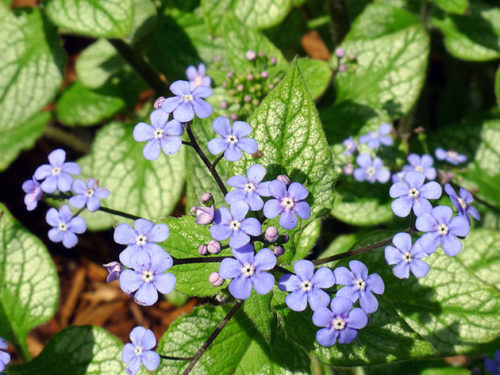
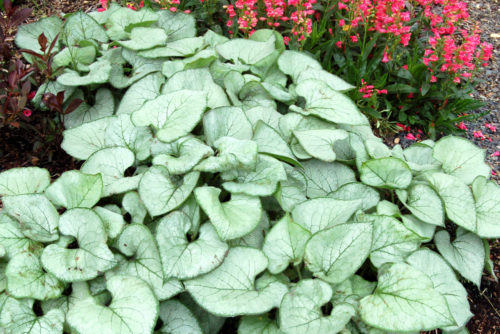
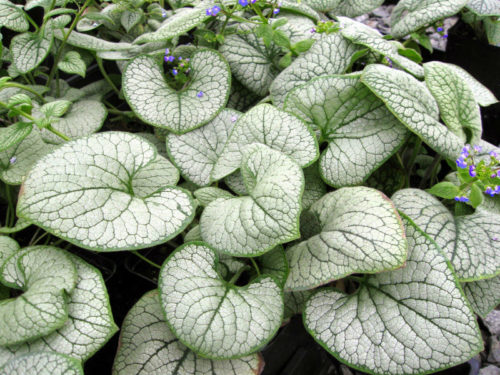
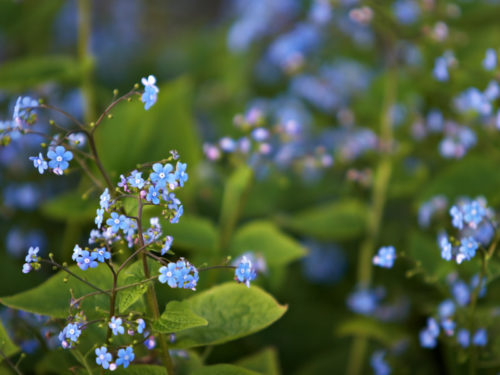
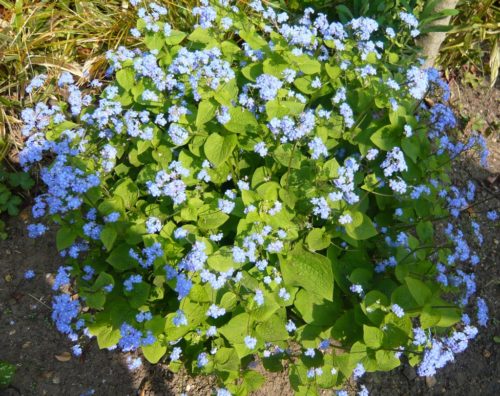
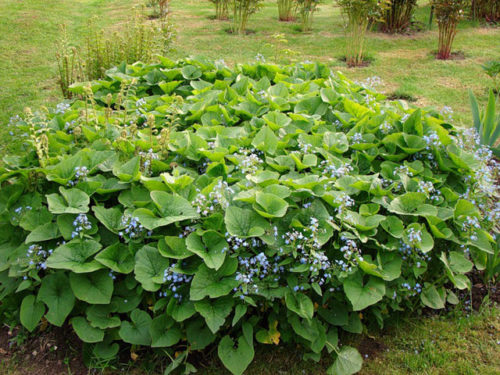

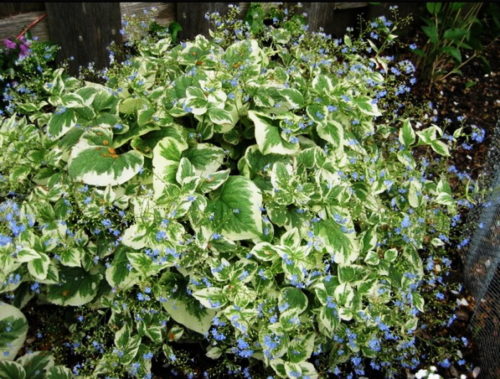

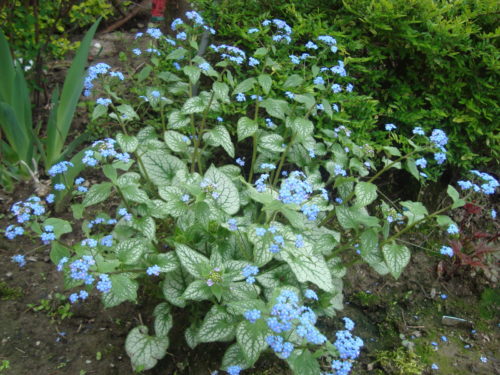
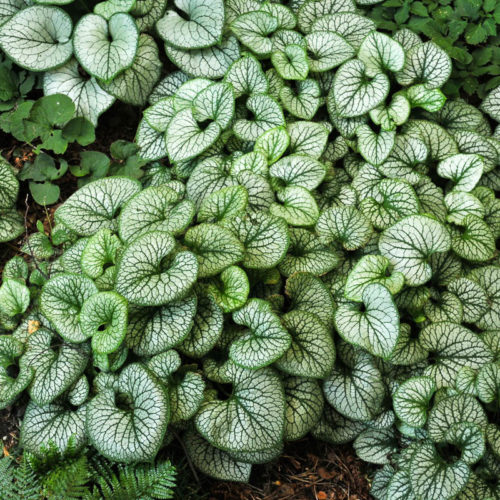












 Start a discussion ...
Start a discussion ...